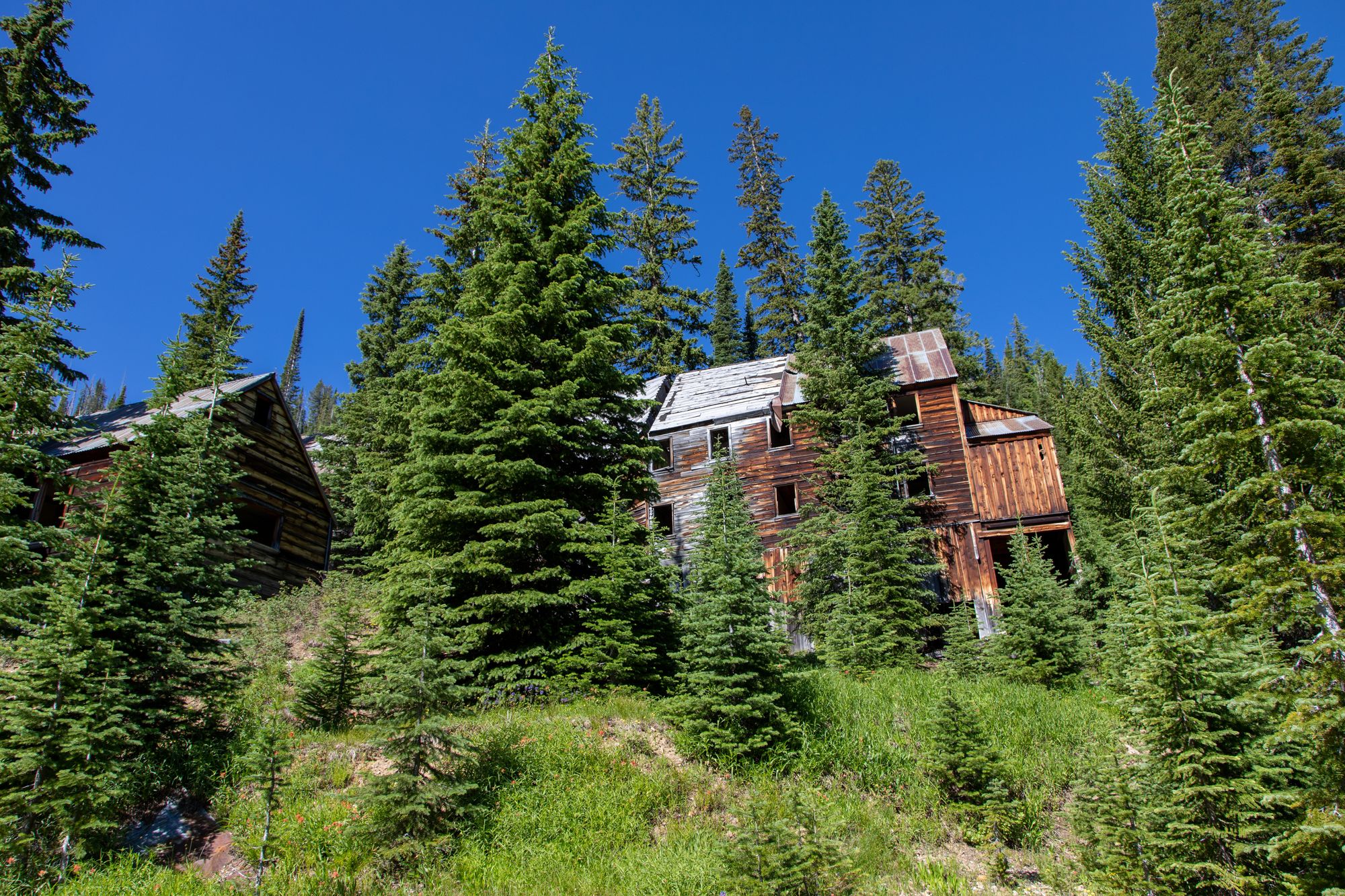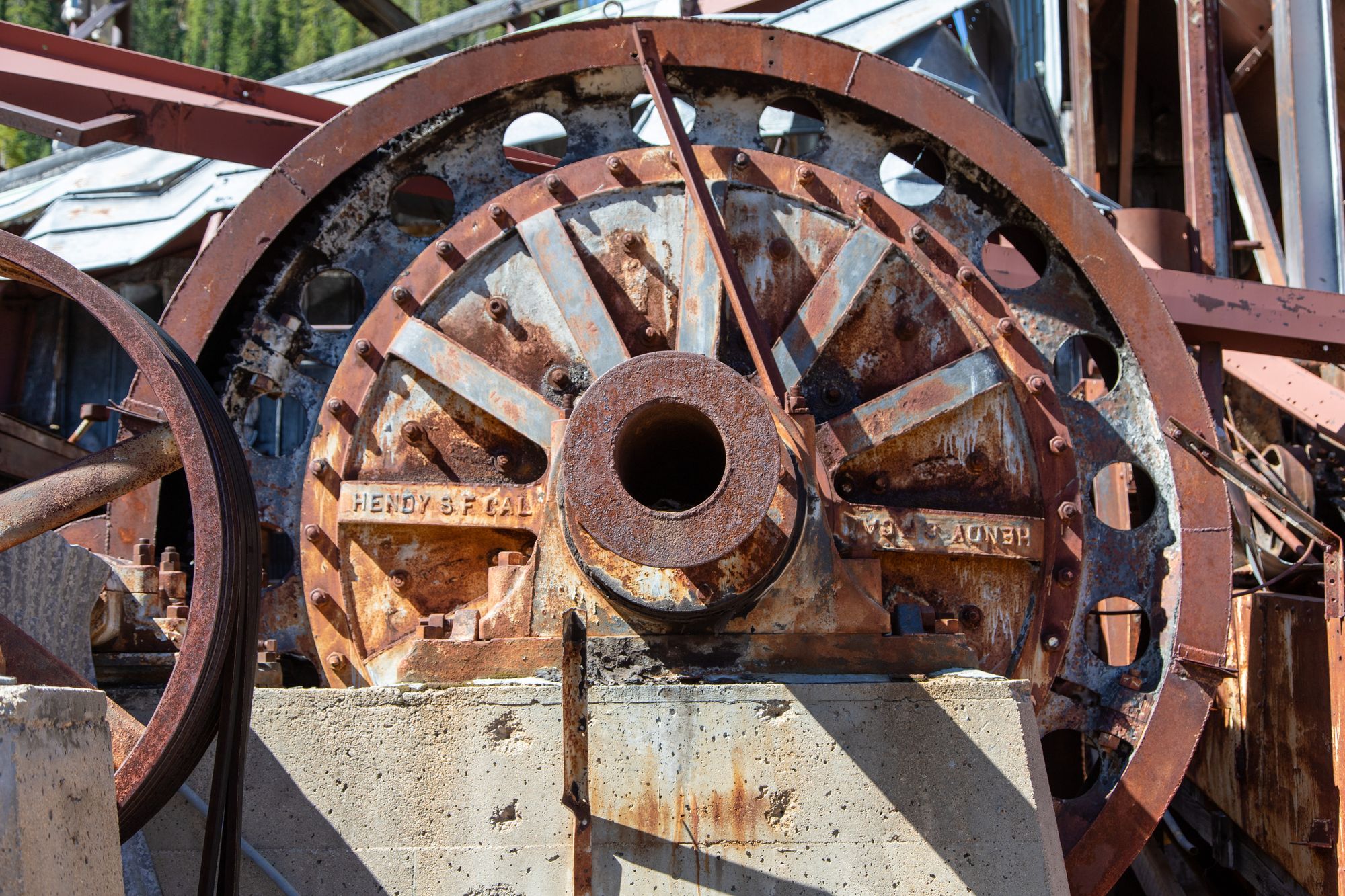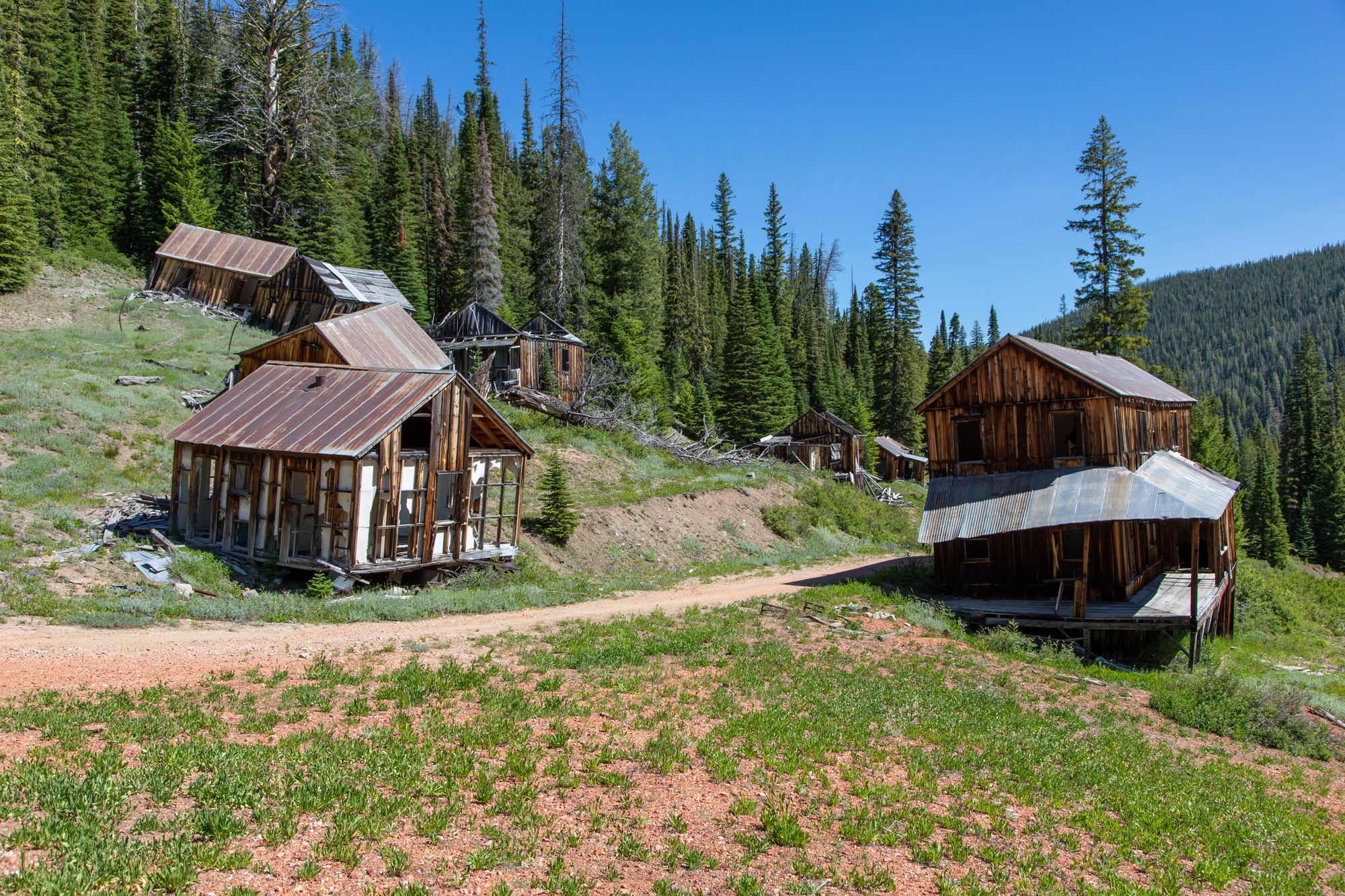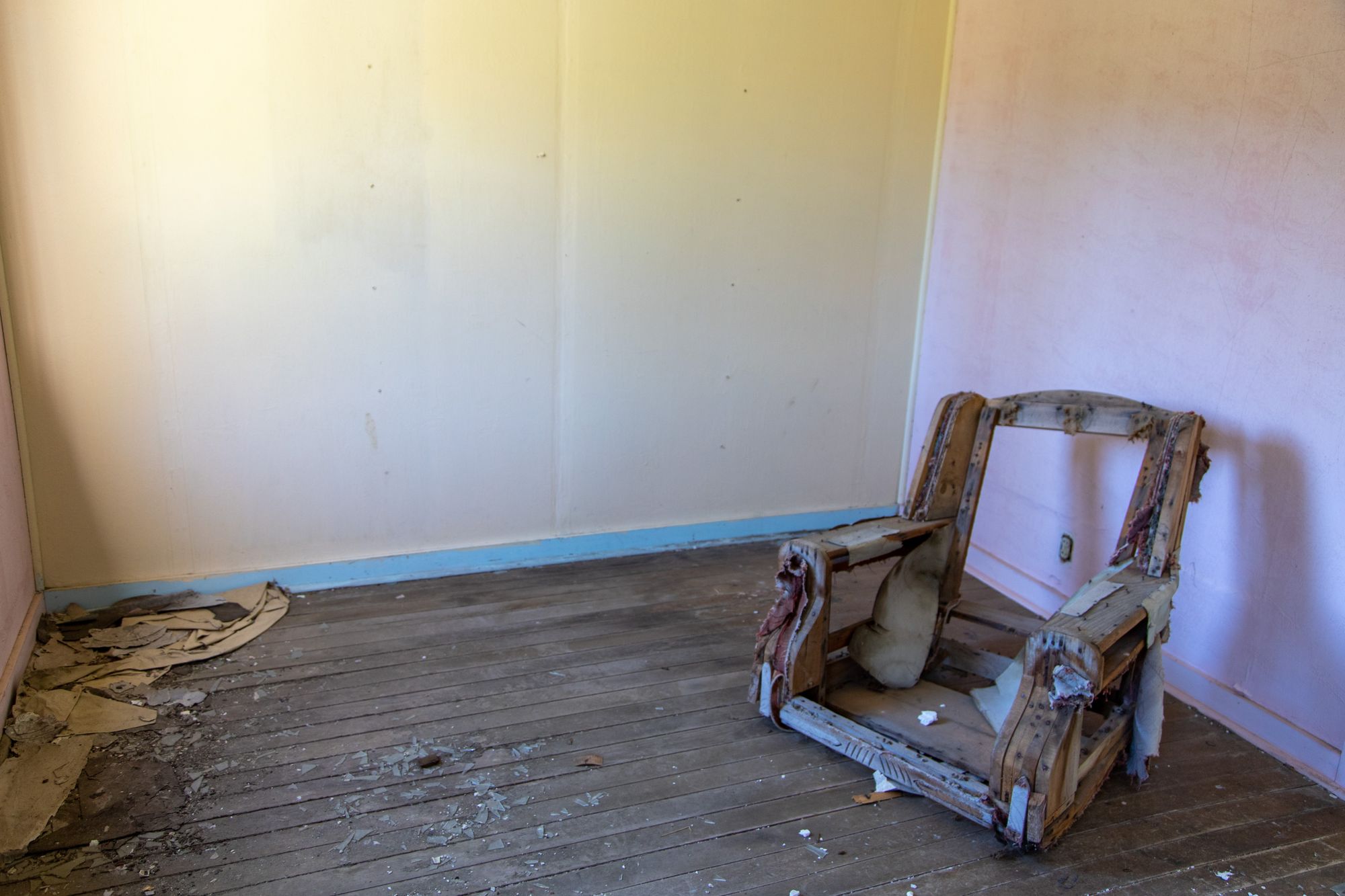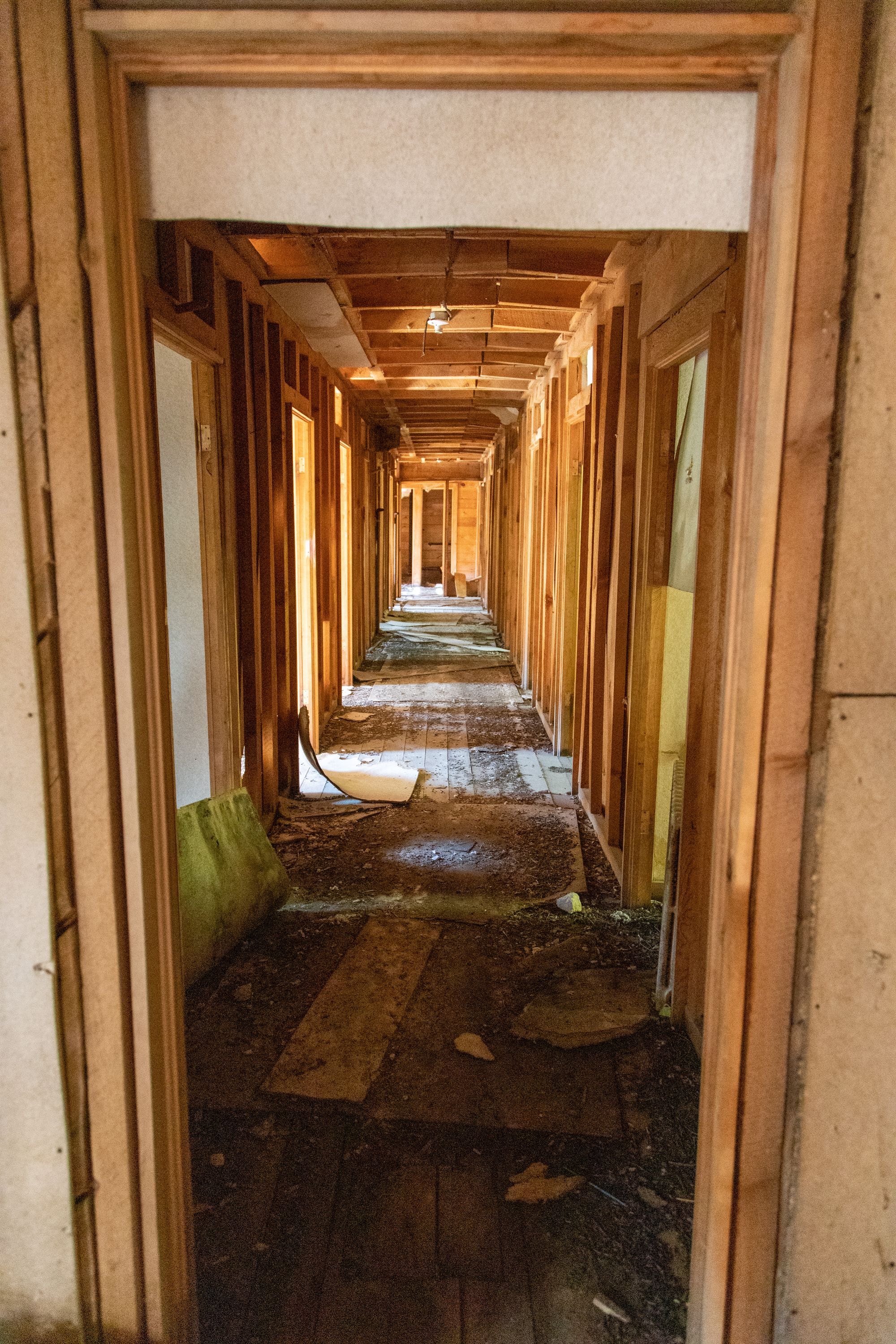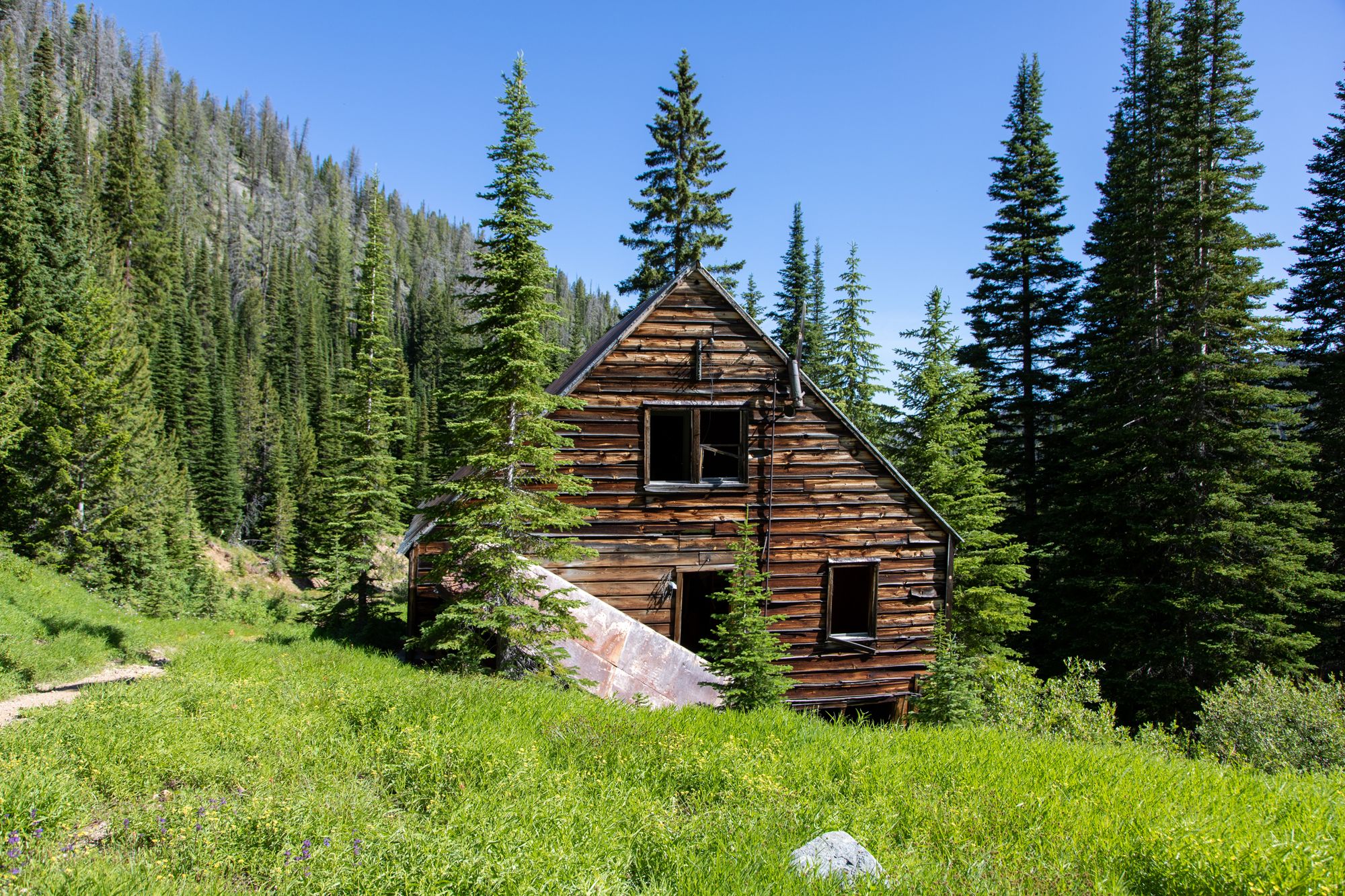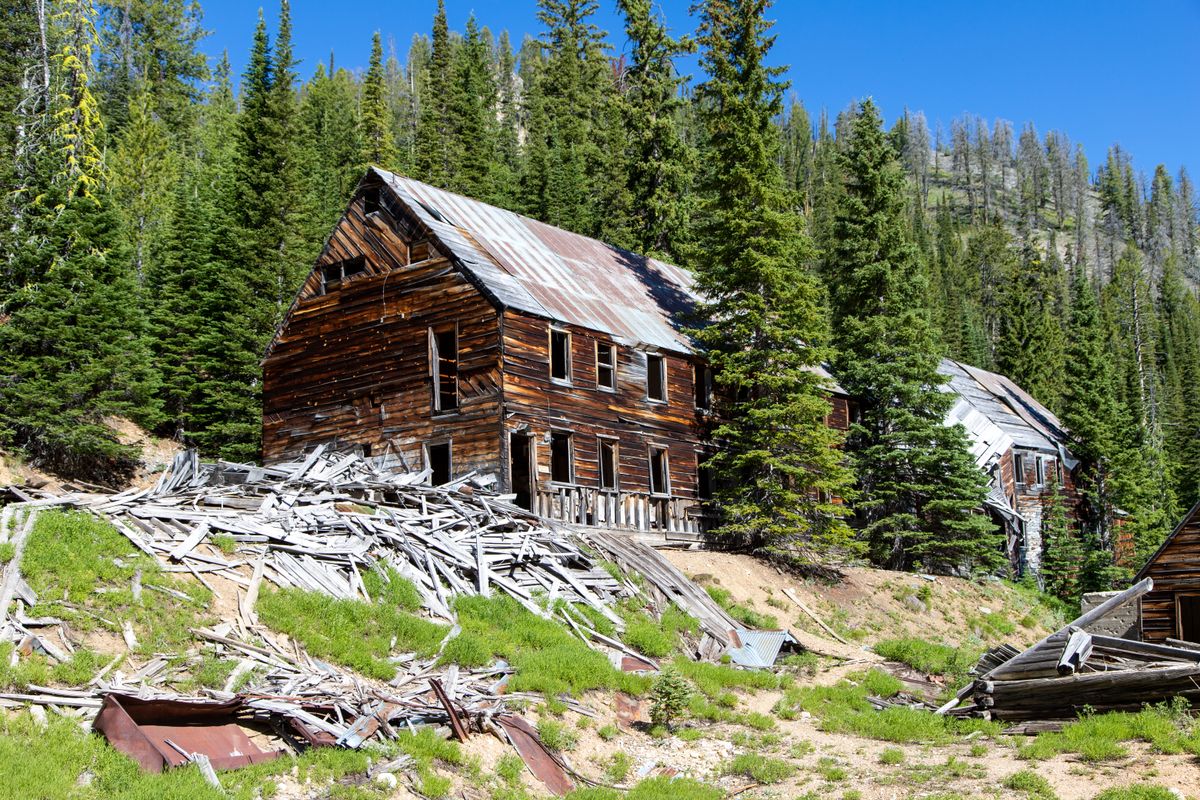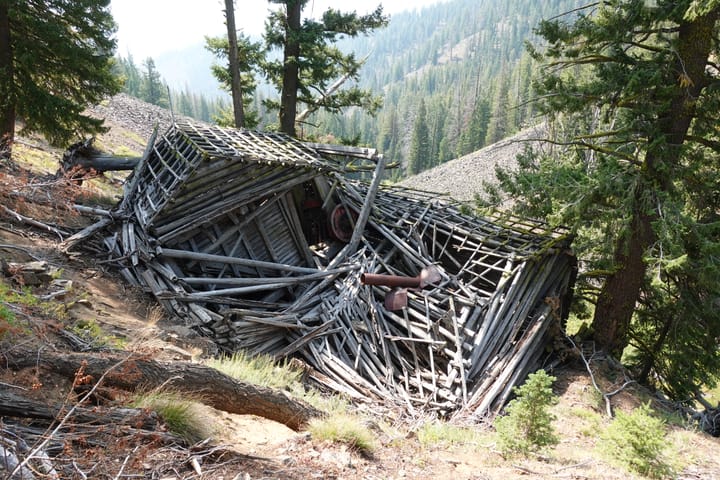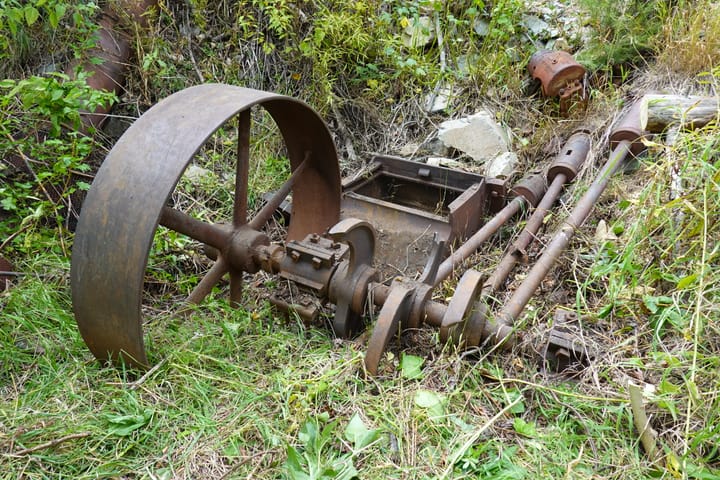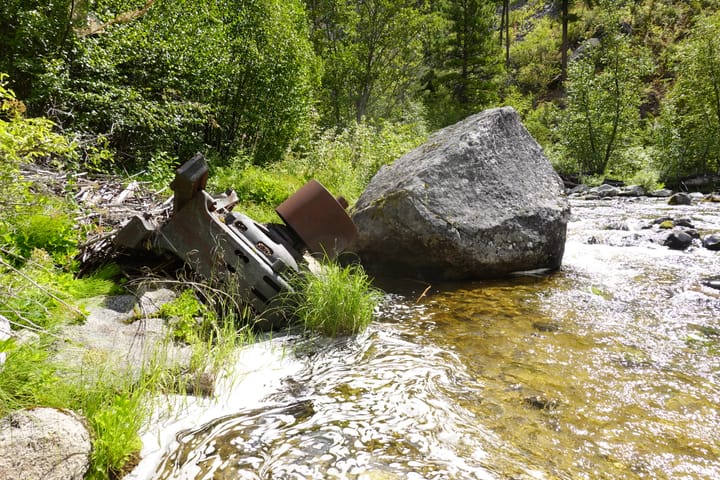In 1942, while other mining camps slowly faded into obscurity, Cinnabar Camp was bustling with new construction: a three-story bunkhouse, a dozen cabins, and a mill rising from deep in the central Idaho mountains. This wasn't gold fever or silver dreams driving the activity. The United States needed mercury for detonators and scientific instruments, and the Hermes Mine, just above Cinnabar Camp, suddenly mattered to the war effort.
Getting to this remote spot requires commitment even today. The roads are rough, narrow, and steep in places, demanding four-wheel drive and careful navigation through miles of thick forest. This isolation didn't stop the mine from becoming one of the largest mercury producers in the United States during World War II, extracting between 200 and 400 flasks per month at peak production. The meadow below the mine, at the headwaters of Cinnabar Creek (renamed from Sugar Creek after the mercury discoveries) and once carved by glaciers, provided the only flat ground substantial enough for a mining camp.
